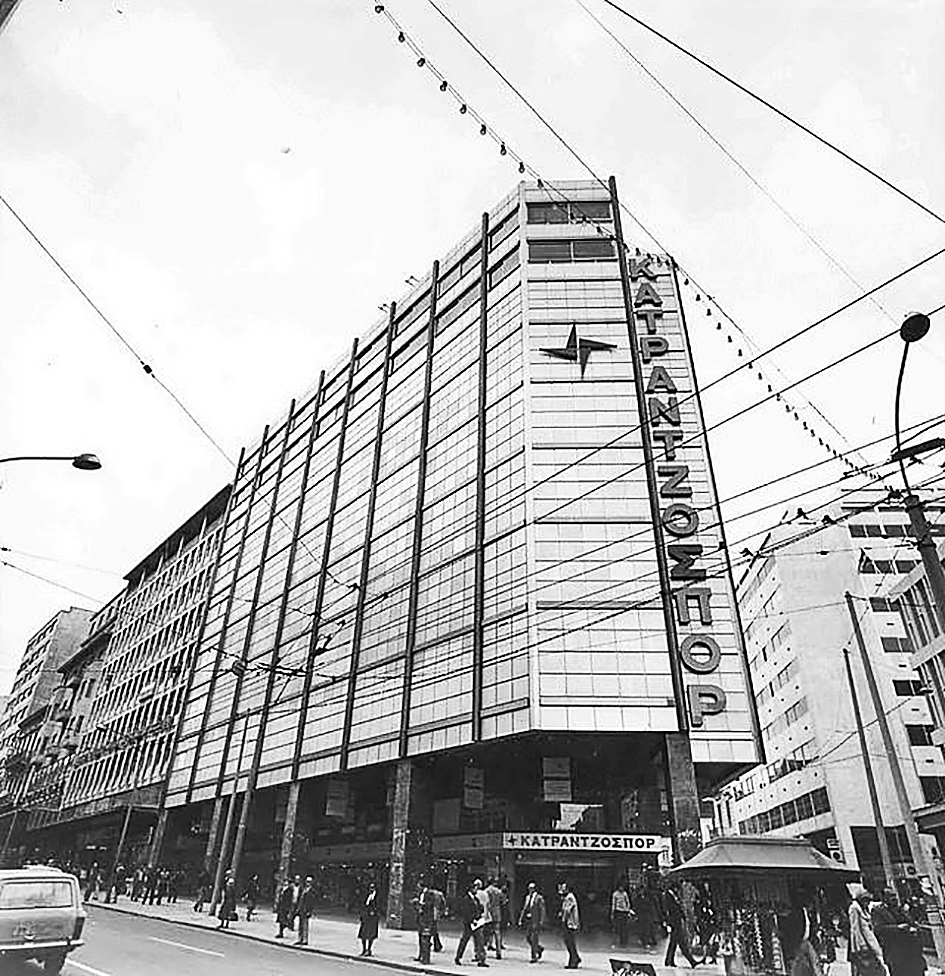The Omonia challenge
The decline of one of the city’s most vibrant areas started with the arson attacks of 1980

In almost any other city, the area in downtown Athens known as “Hafteia” – the junction of Stadiou, Aeolou and Panepistimiou streets leading into Omonia Square that is colloquially named after a popular coffee roastery and cafe that once stood there – would be a jewel in its crown. This is definitely not the case here, but perhaps there is some hope of it turning back into a vibrant hub. It is a significant challenge for the capital’s future.
Most young Athenians will probably have no idea what or where Hafteia is. Back in its heyday, though, it was a symbol of Athens at its best, pulsating with life and foot traffic, glowing with the light pouring out of shop windows. A smorgasbord of cafes, hotels, offices, retail stores and kiosks, buzzing with lottery ticket sellers, well-coiffed urbanites, workers, housewives, down-and-outs and soldiers hitting the town on leave, and home to Athens’ first supermarkets and department stores, Hafteia is a legacy representing an idea that may hold the key to the rebirth of the center’s downtrodden hinterland.
The decline of Stadiou Street as a whole, from Omonia to Klafthmonos Square, is in some ways connected to the fall of Hafteia a few decades ago, a fall whose domino effect also seemed to have swept through Omonia Square and into the other roads leading off from it: Patission, Pireos, Athinas, Tritis Septemvriou and Agiou Konstantinou. The transformation of Stadiou into a dystopia of shuttered businesses and lifeless facades was a phenomenon that appeared very prominently in the local and international media during the financial crisis last decade. Yet, this image of Stadiou was the culmination of the gradual economic and social slide that started at the Hafteia junction many years earlier.
The slide was triggered by a string of arson attacks in 1980 and 1981, oft-forgotten acts of terror that targeted flagship department stores on Patission, Aeolou and Stadiou. To this day, the former Katrantzos sportswear store remains an empty, scorched shell.

Older Athenians can’t think of Omonia without thinking about Katrantzos, Minion, Lambropoulos, Dragonas, Klaoudatos and so many more robust businesses that set the tone in the area back in the 1970s. Even further back, at the turn of the 20th century, and especially thanks to the expansion of the Thanopoulos food market, Hafteia was a commercial, professional and social hub. But as more and more businesses closed and professionals relocated, the human geography of Hafteia changed, creating a new reality that is now calling for something that will raise the area back up, bring back the joy and fascination. It is begging for change – for the better.
Yet Stadiou’s fall and the rather awkward revival of Omonia Square with its new fountain and hotels is an intrinsic part of the Athenian condition. The faded sign of the excellent and now-shuttered Kauffmann bookstore is a symbol of Athens’ flirtation with a faceless and insipid phase that is focused only on leisure and consumption. Places like interesting little bookshops and art-house movie theaters have been elbowed out. And myriad beautiful old buildings that were saved from the wrecking ball are still looking for a new life, like the old Apollo Hotel on the corner of Stadiou and Aeolou.
The Hafteia that stars in the photographs of Costas Balafas or Dimitris Harisiadis – teeming with people holding shopping bags or glowing in the marquee light of old cinemas – is a memory of an erstwhile genuineness. That Athens is a part of a common legacy but mainly of an emotional take on urban history. It is much easier to imagine a revival of Hafteia, Stadiou, Panepistimiou and Omonia than it is to actually see it happen. Nevertheless, some kind of change will come, inevitably, to the degree that this is possible right now. It may not live up to what Athens had to offer in the post-World War II era, but let’s hope that it will at least respect the city’s limits and ambitions.





